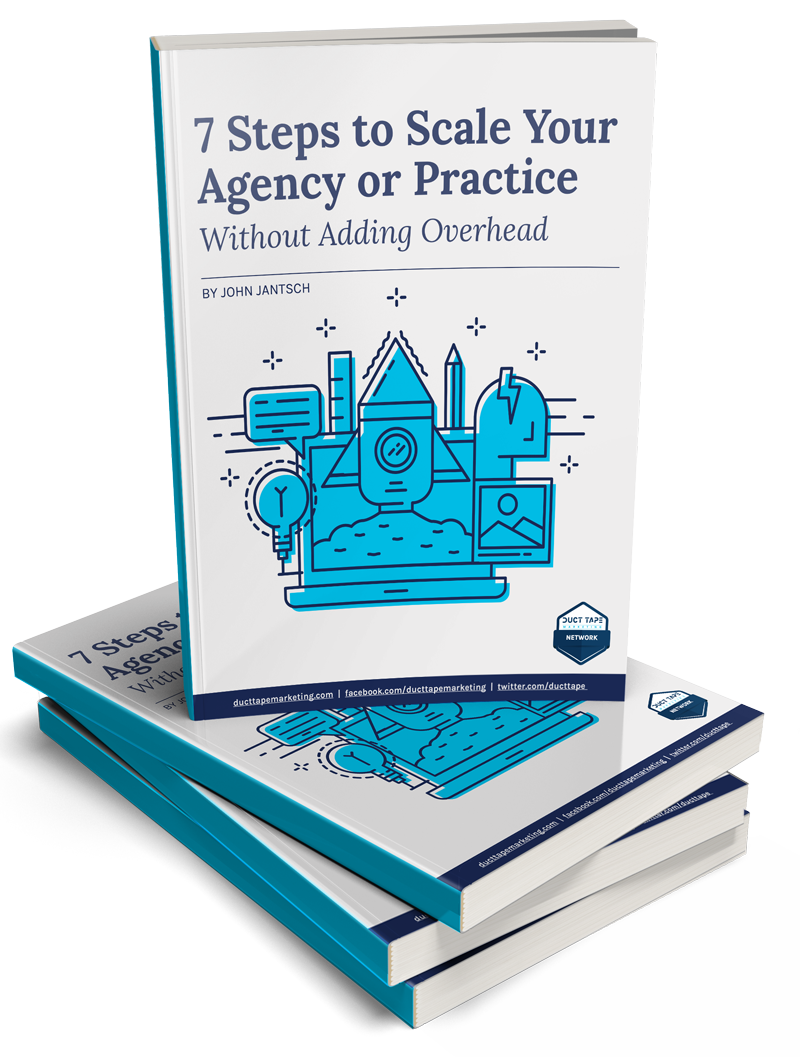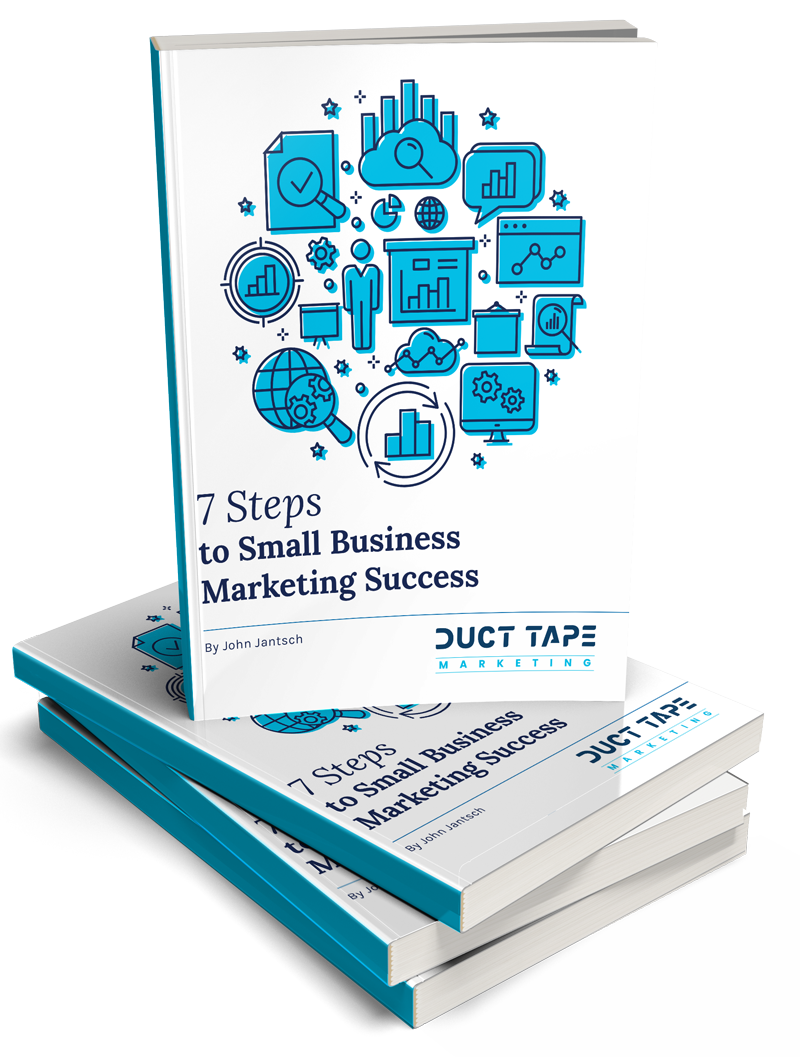It’s guest post day here at Duct Tape Marketing and today’s guest post is from Anand Kansal – Enjoy!
There is arguably no more important book in the world of persuasive selling than Robert Cialdini’s “Influence: The Psychology of Persuasion”. With the rise of online marketing, it was, therefore, only a matter of time before the principles of influence that Mr. Cialdini talked about began to be used by online business owners and marketers to increase sales and conversions on their websites. Specifically, in the world of A/B testing, many successful testers have used them to construct variations which employ one or more of these principles. These principles have been used on major eCommerce and SaaS websites to run tests that result in more and more visitors driven into a conversion funnel or tempted to click on that ‘Add to Cart’ button.
In this post, I’ll be giving an overview of each of the 6 principles before demonstrating a successful A/B test that was conducted on this principle and how you can use this principle to increase the persuasive power of your website. Let’s get started!
Principle#1: Reciprocity
People tend to return favors. The reason why you get free stuff (newsletters, eBooks, guides) all the time in your inbox is because of some marketer wanting you to return the favor by either trying out their product, subscribing to their stuff or sharing their stuff on social media.
Artsy Editor, a premium WordPress WYSIWYG editor, tested 3 combinations of Call-to-Action(CTA) buttons on their homepage. Let us take a look at each of the variations in turn.
Variation 1

Variation 2

Variation 3

The goal of the test was the number of people who clicked through to their demo and pricing page. Variation 1 increased their CTR by 47%, Variation 2 by 17% and Variation 3 resulted in no improvement.
What does this show? If you push too hard at the beginning, the visitors may feel uncomfortable and leave the site. Especially for a SaaS product, the primary CTA should be demo/trial.
Principle#2: Social Proof
People see what they see others are doing. We are more likely to put money in a collection jar which is half full and buy a product recommended by someone known to us. FietsPunt.nl, a Dutch online biking solutions store, used this principle to run an A/B test on their website. What they did was adding a customer testimonial widget to their product pages. This is how the control and the variation looked.
Control
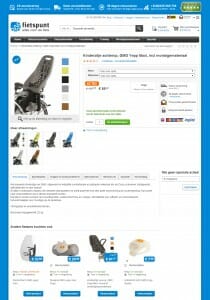
Variation
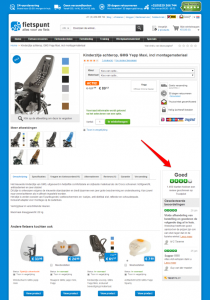
Comparison Image
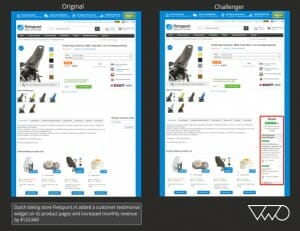
The variation recorded a 36.73% increase in orders and had a 99% chance to beat the original. Needless to say, this was a hugely beneficial test.
Principle#3: Scarcity
The fear of losing out is much more than the joy of winning. This is why salesmen are quick to point out that the ‘special discount’ they are offering is only for a ‘limited period of time’.
RIPT Apparel, an online retailer of designer tees and wearable art, make a new design available every day starting at midnight. This design is available only for 24 hours, post which it is retired for posterity. They tried to use this ‘scarcity hook’ by including it in the text on their CTA button. This is how the control and the variation looked.
Control

Variation

The variation resulted in a 6.3% increase in sales. So what do we see here? A company increasing sales – not by changing business models, adding products, giving offers – but just recognizing a persuasion hook and using it to drive more conversions. This is the power of persuasion.
Principle#4: Authority
People tend to believe in figures that exhibit some sense of authority or leadership. This is why pharmaceutical companies use doctors in their marketing campaigns. Or why we are likely to believe a ‘stock market expert’ even though most of what he/she says turns out to be made up.
Bag Servant decided to use this principle in setting up an A/B test on their product pages. In the variation, they replaced the Twitter Followers badge in the header with a relatively rare WOW badge that was presented to them by a renowned business woman.
Control
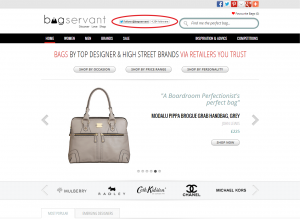
Variation

Comparison image

As a result of this test, product exploration increased by 60.42%.
Trust badges like the one seen above can be used to radically improve the trust factor of your website.
Principle#5: Liking
Many marketers tend to overlook the fact that people are more likely to be persuaded by people who they can relate with, and therefore, like. That is why advertisements of household appliances prefer to show moms and not celebrities.
Medalia Art, an online art store tried to trigger this principle by replacing the images of the painting with images of the artists themselves. This resulted in an increase in conversion rate of more than 95%.
Control

Variation

One way of using this technique is advertising your product through your consumers. Customers today are skeptical and they are more open to word-of-mouth than clichéd advertisements.
Principle#6: Commitment and Consistency
Human beings, in general, have a deep desire to be consistent with their actions. If you’re able to show people that not using your product/service will negatively affect what they most want, they will be more likely to buy from you. This is why you see headlines like ‘Do you want to have 6 pick abs?’ or ‘Do you want a Mercedes in 2 months?’ (Yeah, right)
I have to admit something here. I lied at the beginning of this article. No good test has yet been conducted to see whether Commitment and Consistency really result in increased online conversions. I want to give you this opportunity to show us how you conducted a test based on one of these principles and whether it worked or not. Feel free to comment below.
 Anand Kansal is a Marketer at VWO. He is involved in VWO’s lead generation activities. He’s also responsible for creating content offers, including eBooks and blog posts. Passionate about helping websites increase leads and revenue, he loves to read about behavioral psychology and decision science. He can be found on Twitter at @anandkansal88
Anand Kansal is a Marketer at VWO. He is involved in VWO’s lead generation activities. He’s also responsible for creating content offers, including eBooks and blog posts. Passionate about helping websites increase leads and revenue, he loves to read about behavioral psychology and decision science. He can be found on Twitter at @anandkansal88


